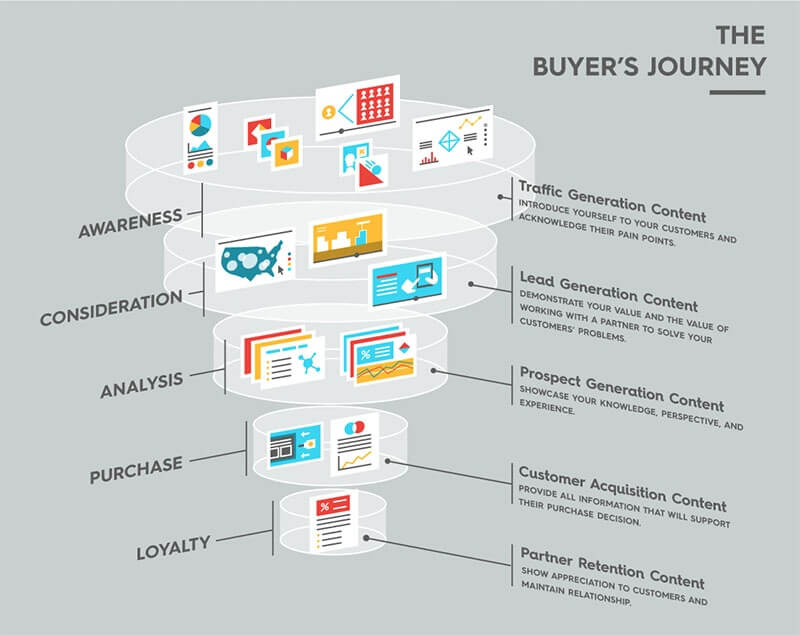There are many elements that need to be aligned to make you successful in marketing. From brand strategy and content strategy to resources and production, it takes a lot to execute everything successfully. And while you may have a grand plan for how you’re going to make it all happen, there’s one crucial element to remember: your metrics.
Without metrics (or a framework to define your metrics), all of your hard work will be wasted. You won’t know what’s working, what’s failing, how to remedy or improve your marketing, or how to justify your decisions to higher-ups. But you don’t just need metrics; you need the right ones. But how do you decide what’s right?
We’ve helped plenty of brands set up their marketing strategies, and we’ve tinkered with our own a ton (which has helped us increase our leads tremendously). What we’ve learned in that time is that choosing the right metrics is a unique process for every brand, but there are a few things that will get you on the right track.
How to Choose Metrics for the Buyer’s Journey
If you’re ready to choose your metrics (or think you need to revisit your existing ones), here are the simple steps you can take to improve your results.
1) Choose Your Goals
“Doing marketing” isn’t your job. Doing marketing that supports your business goals is your job. So when we talk about choosing metrics, the question is really, “What are you trying to achieve?”

It’s important to map your metrics to your objectives from the very start. That way you’ll know you’re always aligned. For example, a young, hip ecommerce store might focus on social engagement and sales, whereas a B2B software sales company will track product demos and subscriptions.
(BTW, if you don’t know your goals and have never actually completed a brand strategy, here’s our easy step-by-step guide to do it.)
2) Identify The Metrics That Support Your Goals
There are a million options to choose from. If you track everything, you’ll drown in data. That’s why it’s smarter to narrow down your metrics for each of the stage of the buyer’s journey to only those that provide the most insight and value. Again, this will depend on your goals, business, unique product/service, etc.
As a rule of thumb, prioritize 2-3 that are directly aligned with your business goals, and use any others as contextual indicators. Just remember that those metrics should be:
- Relevant: They map to your goals.
- Available: You have the infrastructure and tools to track them.
- Accurate: Your tools should be working correctly.
To help you narrow it down, we’ve outlined the most common metrics below (broken down by buyer’s journey stage). That said, there is overlap. You may categorize these differently according to your specific needs. We’ve also turned the metrics listed into this convenient spreadsheet template, so feel free to make a copy for yourself.
Awareness
- Reach:
- Impressions
- Page Views
- Unique visitors
- Publication pickup
- Social content (followers, likes, subscribers)
- Email/newsletter (subscribers, unsubscribers, open rate, churn rate)
- Organic traffic (SEO)
- Perception:
- Brand indexes/surveys
- Social sentiment
Consideration
- Engagement:
- Site traffic
- Time on site
- Lead gen rate
- Bounce rate
- Return rate
- Pages per visit
- Comments
- Asset downloads (e-books, coupons, etc.)
Analysis
- Conversions:
- Leads
- Qualified leads
- MQLs
- SAL
Purchase
- Deals closed
- Upgrades
- Upsells
Loyalty
- Satisfaction and advocacy:
- Referrals
- Product usage
- Customer review scores
- Product registrations
- Account renewals
- Product return rate
- Testimonials
Once narrow it down and get the OK from your team, you can put them to work.
3) Consider Your Formulas
After choosing your metrics, you may also want to take it a step further to extract even deeper meaning. Blending two metrics together will let you answer questions like:
- How much does a lead cost to acquire? (leads totals / campaign costs)
- What is the average lifetime value of a customer? (customer totals / average opportunity)
These can be incredibly valuable.
4) Measure and Experiment
Marketing is part art, part science. To improve your results, it’s important to test and experiment, iterate, then test again. You may also find that, as your strategy changes, there are more relevant metrics to track.
This is all part of the game. In fact, we recommend revisiting your metrics every 6 months or so to make sure they’re still working for you.
Remember: Marketing Is Ever-Evolving
Continue to educate yourself, experiment, and ensure your efforts are always aligned to your larger goals. A few more resources to help you succeed:
- Make sure you have a solid content strategy, and that you are tracking the right metrics for it.
- Find out what content works best for different stages of the buyer’s journey.
- Learn how to bridge marketing and sales in your buyer’s journey.
BTW, if you’re still unsure about your metrics or struggling to improve your results, hit us up and we can talk through your strategy.





